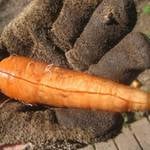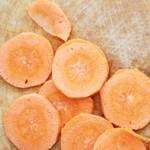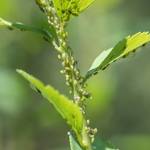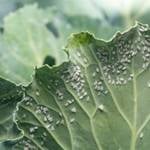
How to Grow Turnip Seeds
Grow Guide #2332
Family: Brassicaceae
Binomial name: Brassica rapa
Life Cycle: Biennial (usually grown as an annual)
This 'How to Grow' guide details everything a home gardener needs to know to plant, grow and care for Turnips (Brassica rapa).
When to Sow Turnip Seeds
Turnips can be grown year-round in most climates. Avoid planting in extremely hot or cold weather which can affect germination and growth. Use the table below to identify the best time of year to sow turnips in your climate.
| JAN | FEB | MAR | APR | MAY | JUN | JUL | AUG | SEP | OCT | NOV | DEC | |
|---|---|---|---|---|---|---|---|---|---|---|---|---|
| Cool | ||||||||||||
| Temperate | ||||||||||||
| Sub-Tropical | ||||||||||||
| Tropical | ||||||||||||
| Arid |
Preparation
Turnip plants are best grown in full sun or part shade. Choose a location that will receive at least 3 hours of full sun each day.
Turnip plants need a loose, well drained soil enriched with organic matter. Prepare soil by weeding it thoroughly, digging it over to at least a spade’s depth to loosen the soil, and adding aged animal manure or compost. Organic matter can be dug into heavy soil to lighten it so roots can grow freely. Keep the area free of weeds until planting. Learn more about preparing soil for planting here.
How to Sow Turnip Seeds
Turnip seeds do not require any treatment (eg soaking, stratification) before sowing.
Turnip seeds grow best when they are sown directly into the garden.
- Sow seeds directly in the garden 10mm deep and 7-15cm apart, with rows 20-40cm apart.
- Keep soil moist but never wet or dry.
- Seeds should germinate in around 5-12 days at a soil temperature of 7-25°C.
- Young seedlings will need protection from pests, pets and weather until they are established.
How to Grow Turnip
Turnip plants may need watering during the growing season. Water when the soil is dry about 5cm below the surface (test this by scratching away a little soil with your finger). Water deeply in the early morning or late afternoon. Avoid watering the leaves of plants to avoid fungal diseases. Learn more about watering here.
If soil was well prepared no extra fertiliser should be necessary. Fertilising can result in excessive leaf growth at the expense of roots forming. In poor soil use a fertiliser low in nitrogen and high in phosphorus, such as blood and bone, applied at the recommended rate.
How to Harvest Turnips
Turnips should be ready to harvest in approximately 50-90 days.
Leaves are ready to harvest when they are large enough to eat, and can be harvested as needed. Harvest leaves by pinching off the outer leaves, leaving some on the plant for future growth. Eat turnip leaves as soon as possible after harvesting. Store leaves short term in a perforated plastic bag in the fridge.
Roots are ready to harvest when they are large enough to eat, and can be harvested as needed. Harvest individual roots by gently pulling at the base of the leaves, or use a garden fork to lift multiple roots from the soil. Shake off any excess soil and cut the foliage 1-2cm above the top of the root. Store turnips in a perforated plastic bag in the fridge. For longer term storage, turnips can be canned or blanched and frozen.
Common Problems when Growing Turnips
Like all plants, turnip is susceptible to some pests, diseases and other problems. Below is a list of the most common problems gardeners encounter when growing turnip plants:
 Cabbage moth and cabbage white butterfly have white or grey wings with distinctive markings. They lay their eggs on the underside of leaves. Their caterpillars feed on the leaves, creating large holes and sometimes skeletonising the leaves. Use netting to exclude butterflies and moths or decoys to deter them. Pick the caterpillars off the plants or use an appropriate spray in a selective and targeted way. Read more about cabbage moth and cabbage white butterfly here.
Cabbage moth and cabbage white butterfly have white or grey wings with distinctive markings. They lay their eggs on the underside of leaves. Their caterpillars feed on the leaves, creating large holes and sometimes skeletonising the leaves. Use netting to exclude butterflies and moths or decoys to deter them. Pick the caterpillars off the plants or use an appropriate spray in a selective and targeted way. Read more about cabbage moth and cabbage white butterfly here. Bolting is when a plant prematurely flowers and goes to seed. Bolting can be caused by a period of extreme weather. Avoid sowing seed until after the danger of frosts has passed or in very hot weather. Water plants regularly and deeply in hot weather to prevent them suffering heat stress.
Bolting is when a plant prematurely flowers and goes to seed. Bolting can be caused by a period of extreme weather. Avoid sowing seed until after the danger of frosts has passed or in very hot weather. Water plants regularly and deeply in hot weather to prevent them suffering heat stress. Split roots are usually caused by inconsistent watering when roots are mature. Water deeply and evenly to keep soil moisture consistent and always take recent or expected rainfall into consideration before watering.
Split roots are usually caused by inconsistent watering when roots are mature. Water deeply and evenly to keep soil moisture consistent and always take recent or expected rainfall into consideration before watering. Small roots can be the result of sowing too thickly or over fertilising. Thin seedlings to give roots adequate space to grow. Do not fertilise plants as this may encourage the growth of foliage at the expense of roots.
Small roots can be the result of sowing too thickly or over fertilising. Thin seedlings to give roots adequate space to grow. Do not fertilise plants as this may encourage the growth of foliage at the expense of roots. Tough roots usually indicate that the roots were harvested too late. Harvest roots when they are young and tender.
Tough roots usually indicate that the roots were harvested too late. Harvest roots when they are young and tender. Aphids are small (2-4mm long) sap-sucking insects that congregate on the new shoots or the undersides of leaves. They can cause leaves to wilt or become discoloured, and also excrete honeydew which can attract ants and other insect pests. To manage aphids, remove them by spraying with a garden hose, apply a soap or alcohol spray, or encourage predatory insects to your garden. Read more about aphids here.
Aphids are small (2-4mm long) sap-sucking insects that congregate on the new shoots or the undersides of leaves. They can cause leaves to wilt or become discoloured, and also excrete honeydew which can attract ants and other insect pests. To manage aphids, remove them by spraying with a garden hose, apply a soap or alcohol spray, or encourage predatory insects to your garden. Read more about aphids here. Whitefly is a sap-sucking insect related to aphids. They are often found in large numbers on the underside of leaves and will swarm in clouds when disturbed. Plants may have yellowing leaves or may wilt, and growth will be slowed. Whitefly can be removed with a garden hose or sprayed with soap spray. Badly affected plants should be destroyed. Attracting beneficial insects that will prey on whitefly can be beneficial. Read more about managing whitefly here.
Whitefly is a sap-sucking insect related to aphids. They are often found in large numbers on the underside of leaves and will swarm in clouds when disturbed. Plants may have yellowing leaves or may wilt, and growth will be slowed. Whitefly can be removed with a garden hose or sprayed with soap spray. Badly affected plants should be destroyed. Attracting beneficial insects that will prey on whitefly can be beneficial. Read more about managing whitefly here.


.png)






